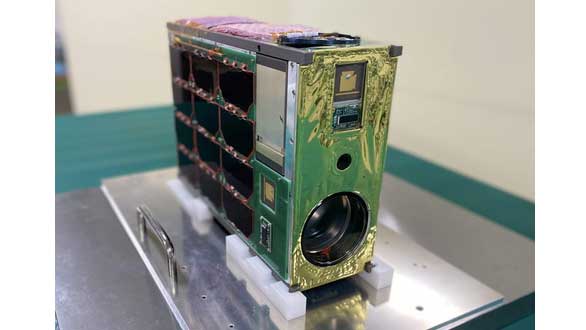Pentax reaches new heights as a 14-year-old lens is launched into space
As a 300mm Pentax lens is launched into space, it appears an old dog really can learn new tricks

A Pentax lens released in 2008 is being sent to space attached to a CubeSat satellite to take photos of the Earth. The telephoto lens, which is popular among bird and wildlife photographers, made the cut thanks to a few very important features.
The Kitsune CubeSat is a miniature satellite for space exploration and is a class of spacecraft known as a nanosatellite. Kitsune is a satellite developed by Haradaseiki Kogyo, Addnics Corporation and the Kyushu Institute of Technology. The 6U CubeSat will carry onboard a high-resolution camera with a Pentax SMC DA 300mm f/4 ED IF SDM LENS.
• Read more: Best lenses for astrophotography
Developed at Isispace, the 6U CubeSat unit built on the engineering expertise and subsystem heritage developed by the company. It's designed to be used for military, commercial and scientific missions in communications, data collection and distributed science.
The requirements for the lens included being made of metal, so there is no outgas from resin; it must be high-resolution from five meters; and it must have a compact design that fits into the small satellite unit. Outgas is a gas released by organic materials in vacuum environments, and there is concern that it could affect the accuracy of the data collected, the quality of images and the ability of the optical instrument.
It might not be the longest Pentax telephoto prime, but it seems to be one of the most popular judging by online forums. Even its age doesn’t seem to put people off, with many saying it’s their go-to lens for wildlife photography.
The mission was launched on 20 February by the US Antares rocket, which docked with the International Space System, and it will now begin its mission documenting earth. This might be the most unusual use of the lens yet, but it just goes to show that even an old lens can have new life breathed into it.
Get the Digital Camera World Newsletter
The best camera deals, reviews, product advice, and unmissable photography news, direct to your inbox!
Read more:
Best cameras for astrophotography
Best astrophotography software
Best telephoto lenses

Having studied Journalism and Public Relations at the University of the West of England Hannah developed a love for photography through a module on photojournalism. She specializes in Portrait, Fashion and lifestyle photography but has more recently branched out in the world of stylized product photography. Hannah spent three years working at Wex Photo Video as a Senior Sales Assistant, using her experience and knowledge of cameras to help people buy the equipment that is right for them. With eight years experience working with studio lighting, Hannah has run many successful workshops teaching people how to use different lighting setups.
